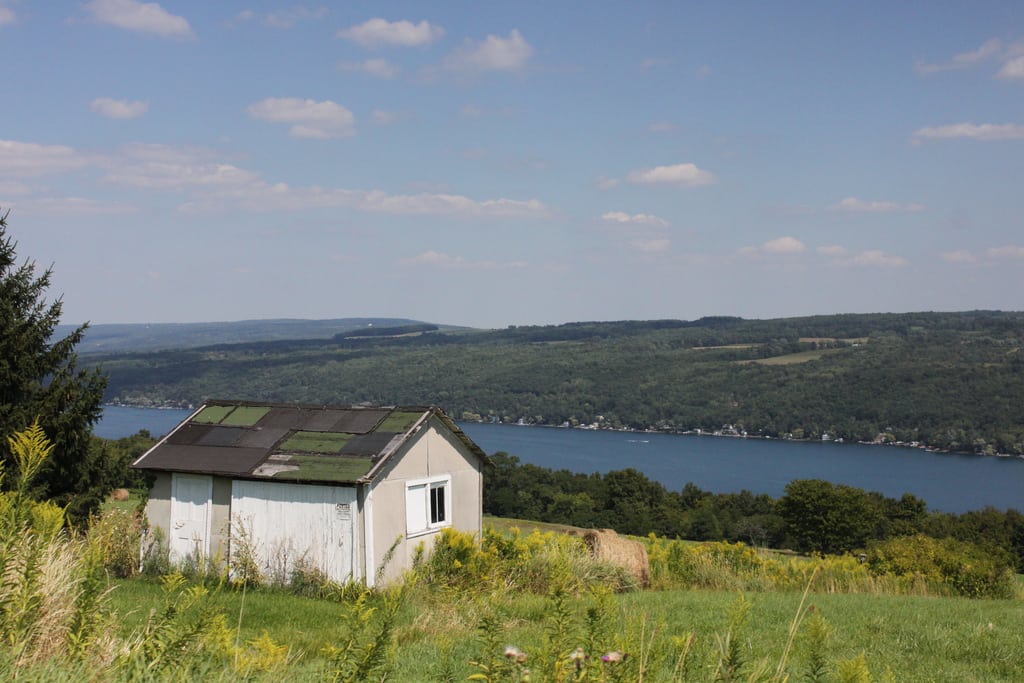Skift Take
Both tourism and the storage facilities would boost the Finger Lake’s economy, but critics of the storage plan fairly claim tourism poses a lesser threat to the region’s natural resources and safety.
The Finger Lakes region of upstate New York, frequented by tourists for its vistas, recreation and vineyards, is dotted with caverns left behind a century ago when the area was a major salt-producing region. Now, an energy company is eyeing those caves as ideal spaces for storing natural gas, upsetting opponents who are trying to prevent a resurgence of industry to what they call an environmental gem.
The plans call for six new rail spurs to handle 24 propane tanker cars every 12 hours. A round-the-clock cycle of trains and tanker trucks seven days a week would bring propane in and out of the facility. Four 700-horsepower compressors would be built, and two open brine ponds would be placed on a hillside above Seneca Lake.
Opponents say the industrial site and related heavy traffic will harm the wine and tourism industries that flourish around the Finger Lakes, a necklace of fjord-like lakes south of Rochester. An accident at the brine ponds could pollute Seneca Lake, which supplies drinking water to 100,000 people.
The critics also fear accidents like the gas explosion and fire that burned for six days at a salt storage facility in Moss Bluff, Texas, in 2004, or the massive sinkhole over a collapsed salt-dome gas-storage site in Louisiana in August that forced the evacuation of 350 people.
“Protecting our kids, making sure they have a future: It seems to be a basic part of our job description,” biologist Sandra Steingraber wrote in a blog post from the jail she was sent to last month for blocking access to the salt cavern. She and two others chose to go behind bars for a week rather than pay a fine of $375.
She likened civil disobedience against the fossil fuel industry to the anti-slavery and women’s suffrage movements and often mentions her two children as the inspiration for her environmental activism. She implored other mothers to join her.
Steingraber and a coalition of groups called Don’t Frack New York have collected more than 3,000 signatures on a “Pledge to Resist Fracking,” which says signers will engage in “non-violent acts of protest” if Gov. Andrew Cuomo lifts a 5-year-old moratorium on shale gas development in the state.
Companies have been solution-mining salt beside Seneca Lake for more than a century. The process involves drilling about 2,000 feet down into a salt formation left by an ancient sea. Water is injected to dissolve salt, creating brine that’s evaporated to yield salt. The caverns left behind make ideal storage spaces for natural gas and propane, and previous owners have used the Seneca Lake salt caverns for gas storage for decades.
The U.S. Energy Information Administration says depleted gas fields account for the vast majority of the nation’s 410 underground storage facilities. But most new storage facilities built since 2007 have been salt caverns, which are strong and impervious to gas.
Inergy Midstream, based in Kansas City, Mo., wants to build a natural gas storage and transportation hub in the Northeast with connections to the Dominion and Millennium interstate pipelines. The gas, propane and butane stored in the salt mines would likely come from conventional drilling, as well as shale gas drilling using high-volume fracking.
Inergy bought the U.S. Salt plant on Seneca Lake, 2 miles north of Watkins Glen, in 2008 and announced plans to use depleted salt caverns to store liquid propane gas that is pumped into the open spaces. New York’s Department of Environmental Conservation is expected to decide on the company’s environmental impact study soon.
Inergy Midstream said via email: “Propane and natural gas have been stored safely in this region for decades, and we look forward to building upon the established track record of safe hydrocarbon storage in this region while creating jobs, lowering energy prices for area residents, and helping to support the local economy.”
Inergy’s subsidiary, Arlington Storage Co., is seeking permission from the department and the Federal Energy Regulatory Commission to expand an existing natural gas storage project in the salt formation. Inergy also continues to mine high-quality salt at the site.
Two residents formed Gas Free Seneca when details of the plans began to emerge. The first public forum, in April 2011, was attended by about 500 people, said Joseph Campbell, who had recently built a lakefront home.
Some in the community supported the project in recent letters to the Department of Environmental Conservation.
Chris Franzese, owner of the Villager Motel in Watkins Glen, said it would create jobs, generate tax revenues and strengthen the local economy. Jamie Wade, owner of a local fuel company, said it would create a reliable, affordable source of propane in Schuyler County, where more than 20 percent of residents rely on propane for heating and cooking.
Michael Dineen, 64, was one of the three activists jailed. He said he’s not normally one to protest but was moved to action as landowners surrounding his 63-acre organic farm signed gas-drilling leases and Inergy came in with its expansion plans.
“I feel strongly that somebody has to step forward,” Dineen said. “Going to jail shows I really mean it. I don’t want this company in my community.”
Copyright (2013) Associated Press. All rights reserved. This material may not be published, broadcast, rewritten, or redistributed.![]()
The Daily Newsletter
Our daily coverage of the global travel industry. Written by editors and analysts from across Skift’s brands.
Have a confidential tip for Skift? Get in touch
Tags: nature, new york state, safety
Photo credit: A tranquil August afternoon in the Finger Lakes region of upstate New York. Paul Brady / Flickr
